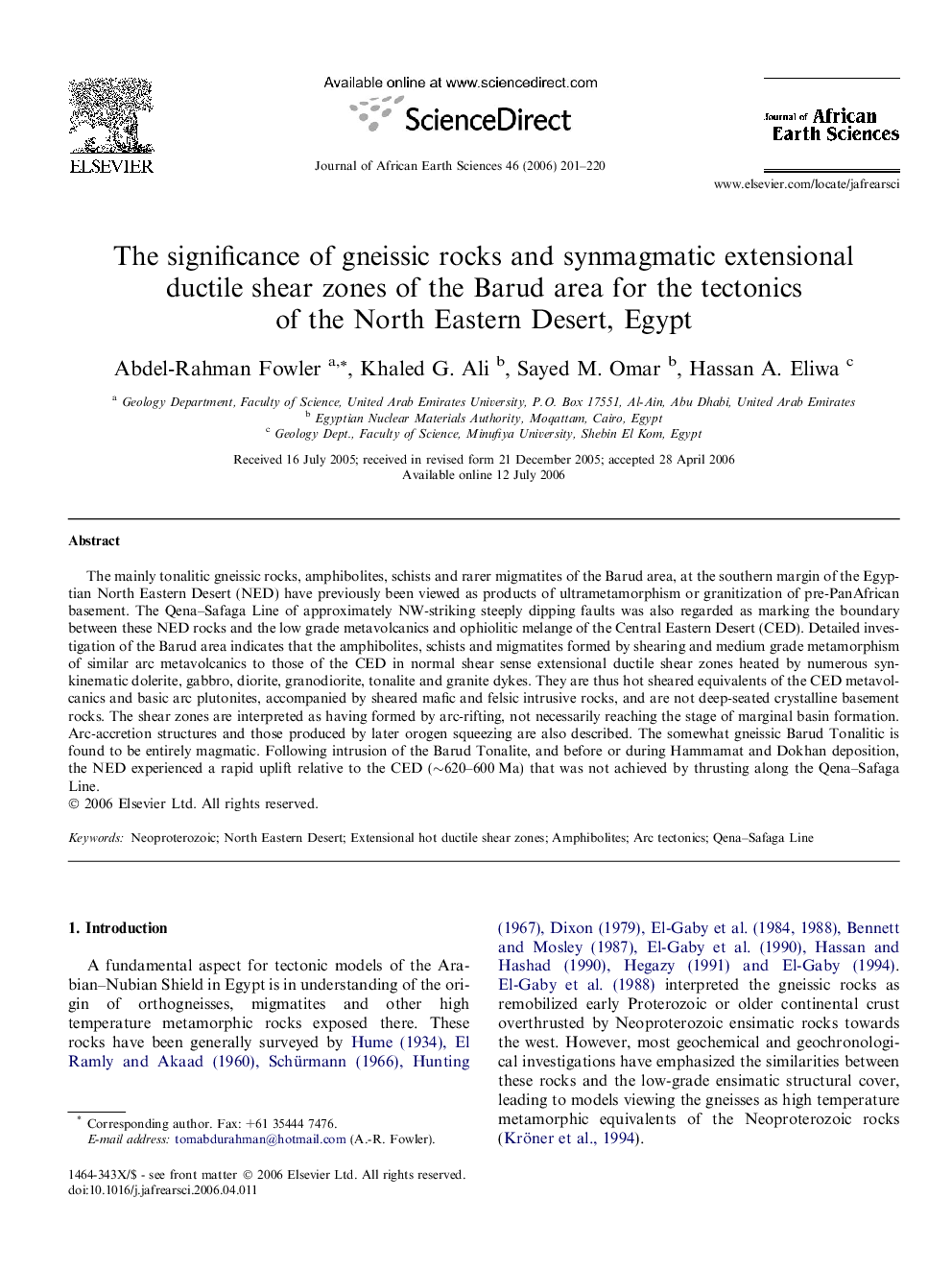| Article ID | Journal | Published Year | Pages | File Type |
|---|---|---|---|---|
| 4729800 | Journal of African Earth Sciences | 2006 | 20 Pages |
The mainly tonalitic gneissic rocks, amphibolites, schists and rarer migmatites of the Barud area, at the southern margin of the Egyptian North Eastern Desert (NED) have previously been viewed as products of ultrametamorphism or granitization of pre-PanAfrican basement. The Qena–Safaga Line of approximately NW-striking steeply dipping faults was also regarded as marking the boundary between these NED rocks and the low grade metavolcanics and ophiolitic melange of the Central Eastern Desert (CED). Detailed investigation of the Barud area indicates that the amphibolites, schists and migmatites formed by shearing and medium grade metamorphism of similar arc metavolcanics to those of the CED in normal shear sense extensional ductile shear zones heated by numerous syn-kinematic dolerite, gabbro, diorite, granodiorite, tonalite and granite dykes. They are thus hot sheared equivalents of the CED metavolcanics and basic arc plutonites, accompanied by sheared mafic and felsic intrusive rocks, and are not deep-seated crystalline basement rocks. The shear zones are interpreted as having formed by arc-rifting, not necessarily reaching the stage of marginal basin formation. Arc-accretion structures and those produced by later orogen squeezing are also described. The somewhat gneissic Barud Tonalitic is found to be entirely magmatic. Following intrusion of the Barud Tonalite, and before or during Hammamat and Dokhan deposition, the NED experienced a rapid uplift relative to the CED (∼620–600 Ma) that was not achieved by thrusting along the Qena–Safaga Line.
